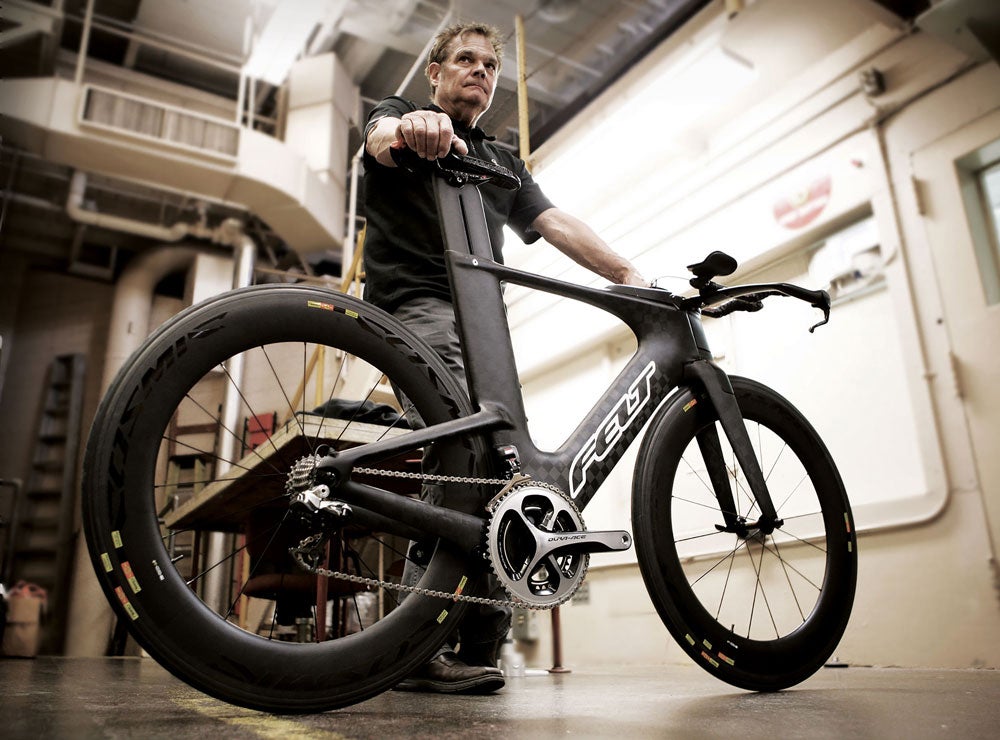Meet a Tri Legend: Jim Felt

One of the most famous last names in triathlon gear has been creating innovations in our sport for decades.
Just before the start of the Escape From Alcatraz Tri, pro Becky Lavelle was in a bind. Her tires needed a fill, and there was no pump in sight. Panicked, she ran to the tent closest to transition: A Felt Bikes vendor.
“I don’t have a pump here, but come to my truck and I’ve got one,” the man in the booth told her.
As they walked, Becky asked him, “So, what do you do for Felt?” She assumed he was a mechanic or sales rep. He gave a little smile.
“I’m Jim Felt.”
This is Jim Felt in a nutshell: Friendly, approachable, and perhaps the most hands-on executive in the history of triathlon. Felt’s success as the engineer behind some of the world’s fastest bikes are not necessarily credited to his understanding of yaw angles (though among other things, Felt is known for his extensive use of wind tunnel testing—constantly tweaking the “soft foil” shape—size-specific tube diameters, and innovative molding methods), but his desire to give riders solutions to their problems.
“When we first met, I was looking to experiment with 24-inch-wheel bikes and lighter frame materials,” recalls eight-time Ironman World Champion Paula Newby-Fraser. “Jim embraced the project.”
It was 1991, and triathlon-specific bikes were still a fairly new concept, so no one knew exactly what worked.
Felt, who was working as an engineer for Easton—with extensive training in metallurgy—was game. Through trial and error, Felt and Newby-Fraser designed a bike frame that featured a stiff ride, straighter forks, and aero tubing. At Newby-Fraser’s request, Felt painted the bike with a matte black finish—to look like a stealth bomber. They aptly named it the B2. Newby-Fraser won her fourth Ironman World Championship that year, and shortly thereafter, Felt launched his namesake bike company beloved by pros and age-groupers alike.
Over the years, Felt would go on to design bikes for multiple legends in cycling and multisport, including mountain biking’s John Tomac, pro cyclist Chris Horner, and champion duathlete Ken Souza. His approach was always the same–by simply listening to what they needed, he could design the best bikes for athletes.
“Jim just kept innovating,” Souza says. “Every time I saw a new Felt bike, it was like a work of art.”
Until his retirement in 2017, Felt was in demand, collaborating with athletes like Lavelle, Michellie Jones, Andy Potts, and Jan Frodeno. The solutions developed in those design sessions still benefit age-group riders today.
“He made Felt bikes a household name,” Lavelle says. “They were high-quality bikes that were accessible to all triathletes. He’s really one of a kind.”